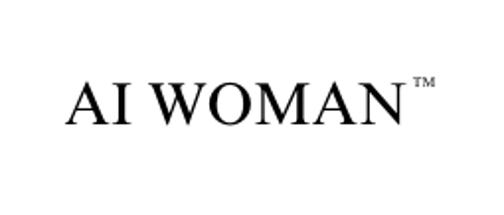AI Woman and Optimus
Harmony and Balance
3/24/20253 min read


AI Woman and Optimus: Complementary Forces in the Future of Robotics 🤖💫
In the ever-evolving landscape of artificial intelligence and robotics, we stand at the threshold of a new era. Two distinct concepts—Optimus from Tesla and the emerging idea of AI Woman—represent different approaches to humanoid robotics that could potentially complement each other in fascinating ways. Though developed separately, their parallel evolution offers a glimpse into a future where diverse robotic systems might work in harmony. Let's explore this hopeful vision! ✨
The Symphony of Complementary Design 🎭🔄
Imagine a future where different humanoid robot designs bring their unique strengths to the table. Optimus, with its industrial focus and utilitarian design, excels at certain tasks, while AI Woman, if developed with different priorities, could excel at others. 🌈
This isn't about reinforcing stereotypes, but rather about embracing the power of specialized design. Just as biodiversity strengthens natural ecosystems, diversity in robotic design could create a more resilient and capable technological ecosystem. 🌱
Specialized Aptitudes for a Complex World 🧩
Physical Specialization 💪🤸♀️
Optimus may be optimized for certain physical parameters—perhaps emphasizing strength, endurance, or industrial applications. Meanwhile, AI Woman could potentially be designed with different physical capabilities, perhaps prioritizing flexibility, precision movement, or fine motor control for specialized tasks like microsurgery or intricate assembly work. 🔬
The human world contains tasks requiring all these different attributes, and our robotic assistants might eventually reflect this diversity of needed capabilities. 🛠️
Cognitive Diversity 🧠✨
Beyond physical differences, these different robotic approaches might develop complementary cognitive specializations:
Optimus might excel at spatial reasoning, logistics, and industrial process optimization 📊
AI Woman could potentially develop strengths in pattern recognition, complex communication, or multivariable analysis 🔍
Together, these different cognitive approaches could tackle problems from multiple angles, much like diverse human teams often find more innovative solutions than homogeneous ones. 💡
Emotional Intelligence and Communication 💬❤️
One particularly exciting area of potential complementarity lies in communication styles and emotional intelligence. Different robotic designs might experiment with various approaches to human-robot interaction:
Some might prioritize efficiency and clarity in task-oriented communication 📝
Others could focus on nuanced emotional intelligence for care work, therapy, or education 🎓
Still others might specialize in cross-cultural communication or accessibility features 🌍
This diversity of approaches would create a more inclusive technological future where different human needs and preferences are accommodated. 🤝
Learning From Each Other 📚🔄
Perhaps the most inspiring possibility is how these different robotic traditions might learn from each other. Breakthroughs in one system could inform improvements in another, creating a virtuous cycle of technological advancement:
Movement innovations from one design could inspire mobility improvements in the other 🚶♀️
Natural language processing advances might be shared across platforms 🗣️
Safety protocols and ethical frameworks could evolve together 🛡️
The history of technology shows that the most rapid progress often comes when different approaches cross-pollinate. 🐝
Collaborative Problem-Solving 🧪🔍
Imagine complex problems that neither robot could solve alone:
Disaster response requiring both heavy lifting and delicate extraction of survivors 🚒
Healthcare scenarios needing both physical assistance and emotional support 🏥
Educational settings benefiting from different teaching approaches 🏫
In such scenarios, having robots with complementary capabilities working together could accomplish what neither could achieve independently. This mirrors how human teams with diverse skillsets often outperform homogeneous groups. 🌟
A More Accessible Future 🌈♿
Different robotic designs also create more options for human-robot interaction, making technology more accessible to everyone:
People with different communication preferences might connect better with certain designs 🗣️
Various cultural contexts might find different robotic approaches more intuitive 🌏
Specialized needs could be met by specialized designs 🔧
This diversity ensures that robotic assistance becomes universally beneficial rather than narrowly useful. 🌍
Beyond Binary Thinking 🔄🌌
The most hopeful vision transcends binary thinking entirely. Rather than just two approaches, we might eventually see a spectrum of humanoid robot designs, each with unique strengths and specializations—a true reflection of human diversity itself. 🌈
This ecosystem approach to robotics would create resilience through variety, ensuring that humanity has the right technological partners for every challenge we face. 💪
The Journey Forward 🛤️✨
As we venture into this exciting future, we can be inspired by the potential for collaboration rather than competition between different robotic traditions. By embracing the complementary nature of diverse approaches, we open ourselves to technological possibilities beyond what any single design philosophy could achieve. 🚀
The story of robotics is still being written, and its most beautiful chapters may well be those where different designs come together, combining their unique strengths to help humanity overcome our greatest challenges and reach new heights of achievement. 🌠
In this hopeful vision, it's not about which robot is better—it's about how their differences make them stronger together, creating a future where technology truly serves the magnificent diversity of human needs and aspirations. 💫
